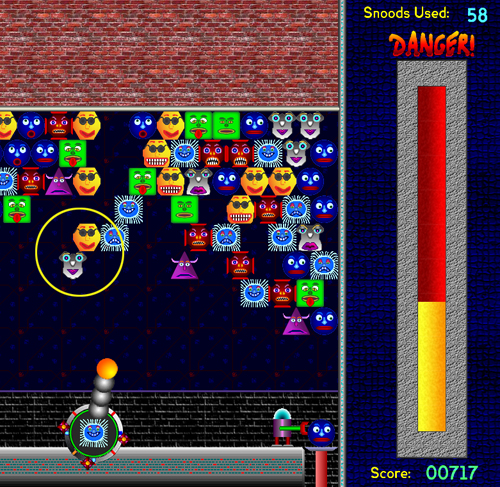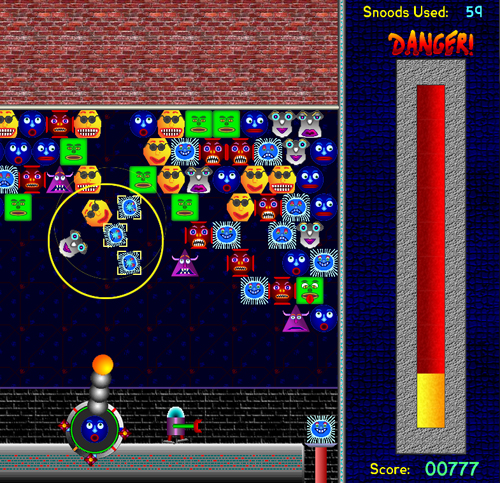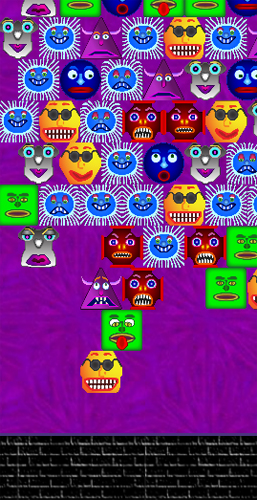I talk about a lot of different iterations of pop culture in these columns — film, literature, music, comics — but even the casual reader will notice that there’s a big video game-shaped hole in the Old Professor’s discourse. I offer no defense. My advancing years constitute no excuse, as there are plenty of guys (and gals) my age and older who learned their way around a joystick while I was highlighting key passages from the Monster Manual. I know, because when I visited their houses I would sometimes play Frogger or Pac-Man on their Atari 2600s, or marvel at the advanced graphics of ColecoVision.
But not at home. My folks didn’t have any moral objection to video games, mind you; but I was the late-in-life child of parents who remembered the Great Depression, and their habits of frugality precluded investment in anything whose worth was at all in doubt. My mother, in 1963, famously proclaimed the Beatles to be ”a flash in the pan,” so these were not people who were easily impressed by the latest-and-greatest. We had a black-and-white TV well into the 1970s, and were the last families in my circle to have either cable TV or a VCR. Video gaming was volatile and unproven arena, and — aside from a Pong console, likely picked up at a garage sale — my parents simply did not venture there.
I never set foot in our town’s little video arcade, either. My pocket money was limited, and I had to make choices. A quarter could buy me one play on a cabinet game, or one comic book; a buck would buy me five plays, or one 45 RPM single. For me, the math was simple.
Though I did not inherit my parents’ ingrained thriftiness — much to my sorrow — my upbringing did leave me an habitual late adopter of new technologies. Add in my dicey hand-eye coordination, and ”late,” in this case, became ”never.” Video games and gaming culture are native to my children, but still mostly alien to me. I just never caught the bug. If we didn’t have kids, we would never have bought a game system at all, and would never miss it. The whole hobby leaves me slightly baffled, frankly; I don’t know where people find the money for it, or the time. The only console games I’ve ever played voluntarily are the Rock Band series, and while I enjoyed myself immensely, given the choice I would have preferred to spend those hours playing in an actual rock band.
So if you’re waiting for an uptick in gaming coverage here, don’t hold your breath, is what I’m saying.
But it’s not all work, work, work here at the Old Professor’s desk. Like anyone else who’s ever used a computer or a smartphone, I’ve wasted countless hours on casual gaming — the shovelware that comes pre-loaded on any device, or the silly little Flash creations that you stumble across in your browser. I often start my workday with twenty minutes of four-suit Spider Solitaire, to ramp up my patterning skills and get me in a problem-solving frame of mind.
And then there’s Snood.
Maybe you used to play Snood, and maybe you’ve forgotten about it. It wouldn’t surprise me. It’s a pretty elemental matching game, conceptually derivative of other, better-known games, and its fame, (such as it is) rests largely on its being one of the early success stories of the shareware movement. And I do mean ”early.” Snood’s graphic aesthetic so powerfully evokes a certain era in home computing that I can scarcely play it without experiencing a powerful urge to fire up Netscape and build a GeoCities page to host my collection of dancing-hamster GIFs.
The mechanics of the game are simple enough. There’s a block of Snoods at the top of your screen — they’re the little cartoon faces, and they’ve all got individual nicknames and you can buy T-shirts with their pictures on them, just in case you never, ever want to get laid again — and a cannon at the bottom. The cannon lets you fire additional Snoods (which are delivered to you in semi-random order) into the block. When the Snood that you fire attaches to two or more Snoods of the same variety, the entire contiguous grouping vanishes, leaving a gap in the grid. Your goal is to clear all Snoods from the screen. There are difficulty levels that introduce various complicating factors, but that’s about it.
What sets Snood apart from conceptually-similar games like Tetris, or Bejeweled, or the many games where you fire colored balls into a rolling column of same — what makes it conducive to the state of Zen-like contemplation that is the hallmark of casual desktop gaming — is that there is no outside time pressure, no ticking clock. You can take literally all day to line up your shots, if you want. Now, the Snoods do advance gradually downscreen, Space Invaders-style, and your endgame is to vanish em all before any can touch bottom. But oh! cruel Lady Irony! You’re also the one moving them down. For with every shot you take, the ”Danger Bar” on the right-hand side ticks upwards a notch, and when it tops out, all the Snoods slip down a row.
The ironies don’t end there, though. Because you can buy yourself some breathing room — literally roll the Danger Bar backward — by dropping Snoods out of play, rather than by vanishing them. Look at these cropped screenshots.
See where I’ve circled in yellow? Two Snoods, the yellow and the gray, are attached to the grid only along the edge of the hairy light-blue guy — and there’s a match for him loaded into the cannon. Let’s take the shot…

There are a couple of things happening here. The three hairy guys are vanishing, as expected — and the gray and yellow Snoods, now detached from the formation, are falling off and out of play. So with this single shot we’ve eliminated not two Snoods, but four.
Now look over to the right. Not only is there a score bonus, but the Danger Bar has reversed its course. In fact, for every Snood you drop, the Danger Bar rolls back two notches.
This feature actually encourages a perverse strategy of intentionally increasing your danger in order to get the reward of the bonus. Look at this: there’s a big block of blue hairies on the left which, if it vanished now, would drop only a single additional Snood.
If I purposely pile up more Snoods in that area while waiting for a hairy in my cannon, like so…

…then my eventual shot when I do get a hairy nets me a 400+ point bonus, and rolls my Danger Bar all the way back to zero!

Let’s be clear here: The player is rewarded for getting out of a jam that he himself has created.
This is behavior that, in the real world, would be labeled self-destructive at best, sociopathic at worst — not quite a symptom of any clear-cut mental illness (although there’s a slight flavor of Munchausen’s-by-proxy to the whole thing), but surely a sign of a badly screwed-up decision-making process. I figured that the organizational management-theory types would have a name for it — and boy, was I right.
In a stunningly tasteless bit of phrase-making, this behavior in the corporate environment has been dubbed AFS, or Arsonist Fireman Syndrome, after those news stories you occasionally hear about the volunteer firefighter who gets caught torching property in order to create a situation in which he himself can play the hero — a blessedly rare occurrence, overall, though widespread enough that FEMA thought it necessary to issue a white paper on the problem. In management theory circles, the term refers to an organizational culture that focuses on troubleshooting to the detriment of long-term strategic thinking, where reactive problem-solving — known also as ”lag measures” — is tacitly valued and rewarded over continuous process improvement, or ”lead measures.”
Obviously, it’s preferable for an organization to never get itself into a crisis situation in the first place. In an ideal world, supply chains would never fail, communication would never break down, ego and incompetence would never threaten to take the wheels off the whole damn thing. Careful planning and cool heads would win the day, and no number would go uncrunched. The problem, from a management consultancy standpoint, is that lag measures are sexy. Troubleshooting, fire-fighting, problem-solving, rescue missions — these have immediate appeal, in a way that a steady hand at the wheel might not.
The goal for anyone in any organization is to leave the place in better shape than you found it. We measure these things by contrast; continuous incremental improvement will be inherently less noticeable than wrenching transformation. If the place is a barely-functional wreck when you step in, you don’t even have to bring it up to a level of excellence to come off as a hero — you only have to get things working again. When these showy, obvious ”heroic” measures are noticed and rewarded, the hero might be inclined to seek those rewards again, by consciously or unconsciously nudging the organization towards another crisis point — another chance to show his quality.
And what of the Steady Eddies who shepherd their departments along with quiet competence, implementing the sort of smart, gradual improvements that pay dividends of efficiency and profit further down the line? How do they feel, when the big bosses all gather round the conquering hero to admire his latest battle scar (albeit self-inflicted)? They may react in a few different ways when their efforts are thus disincentivized. They may scale back their improvements and coast; they may jump ship for another organization where their talents will be recognized; or they may decide that if you can’t beat em, you might as well join em, and light a few small fires of their own.
It’s a management nightmare — even in an organization of one. Plenty of individuals live this way, lurching from one crisis to the next, never getting ahead. Never really trying to, in fact; they derive their satisfaction from the struggle — which can lead them to acts of self-sabotage, just to give them something to overcome.
There’s nothing more admirable, of course, than rising to heroism in the face of genuine adversity. There’s nothing like taking a stand when outside forces conspire against you. But there’s nothing admirable about burning down your own life, just so you can rise from the ashes. Escalating the stakes, taking intentional risks to maximize rewards — these are cornerstones of game theory. But life’s no game, and never was.






Comments